Best Equipment Maintenance Tools for Early Spring to Buy in December 2025
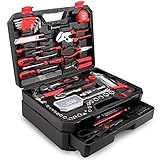
KingTool 325 Piece Home Repair Tool Kit, General Home/Auto Repair Tool Set, Toolbox Storage Case with Drawer, General Household Tool Kit - Perfect for Homeowner, Diyer, Handyman
-
INNOVATIVE STORAGE: 1-DRAWER DESIGN FOR ENHANCED TOOL ORGANIZATION.
-
DURABLE QUALITY: HIGH-QUALITY STEEL, CHROME FINISH FOR CORROSION RESISTANCE.
-
VERSATILE KIT: 325 TOOLS, PERFECT FOR DIY, REPAIRS, AND GIFTING.


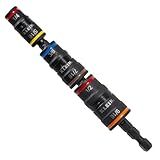
Klein Tools 32933 Klein Tools 32933 Impact Driver, SAE 7-in-1 Impact Rated Socket Set, 3 Flip Sockets with 6 Hex Driver Sizes and 1/4-Inch Bit Holder, 5-Inch Shaft
- VERSATILE 7-IN-1 SET: FLIP SOCKETS FOR MULTIPLE SIZES AND TASKS!
- IMPACT-RATED FOR HEAVY-DUTY JOBS, PERFECT FOR TOUGH APPLICATIONS!
- COLOR-CODED SOCKETS ENSURE QUICK SIZE IDENTIFICATION FOR EFFICIENCY!


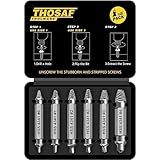
Gifts for Men,Damaged Screw Extractor Set-Christmas Stocking Stuffers for Men Adults Him,Mens Gifts for Dad,Husband,Stripped Screws Nuts & Bolts Drill Bit Tools for Easy Removal of Rusty Broken Screw
-
VERSATILE COMPATIBILITY: WORKS WITH ANY DRILL FOR ALL SCREW SIZES (3-12MM).
-
UNIQUE GIFT IDEA: PERFECT FOR BIRTHDAYS, HOLIDAYS, AND SPECIAL OCCASIONS.
-
DURABLE DESIGN: HIGH-SPEED STEEL CONSTRUCTION ENSURES LONG-LASTING USE.



Klein Tools 32561 Multi-Bit Screwdriver / Nut Driver, 6-in-1 Stubby Screwdriver with 2 Phillips, 2 Slotted, 2 Nut Drivers
-
COMPACT & VERSATILE: FITS TIGHT SPACES WITH INTERCHANGEABLE TIPS!
-
CUSHION-GRIP HANDLE: ENJOY SUPERIOR COMFORT AND TORQUE!
-
INCLUDES ESSENTIAL SIZES: 4 TIPS & 2 NUT DRIVERS FOR ANY TASK!


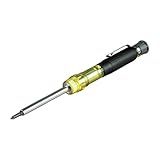
Klein Tools 32614 Multi-bit Precision Screwdriver Set, 4-in-1 Electronics Pocket Screwdriver, Professional Phillips and Slotted Bits, EDC
-
COMPACT & CONVENIENT: POCKET CLIP FOR EASY STORAGE AND ACCESS ANYWHERE!
-
VERSATILE DESIGN: FOUR INTERCHANGEABLE TIPS FOR DIVERSE ELECTRONIC NEEDS.
-
ENHANCED CONTROL: PREMIUM SPIN CAP ENABLES PRECISE FASTENING WITH EASE.


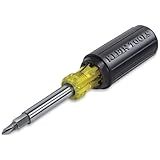
Klein Tools 32500 11-in-1 Screwdriver / Nut Driver Set, 8 Bits (Phillips, Slotted, Torx, Square), 3 Nut Driver Sizes, Cushion Grip Handle
-
11-IN-1 TOOL: VERSATILE DESIGN FOR MULTIPLE APPLICATIONS IN ONE TOOL.
-
QUICK SWAP BITS: EFFORTLESSLY INTERCHANGEABLE COMPONENTS SAVE TIME.
-
COMFORT GRIP: CUSHIONED HANDLE ENHANCES CONTROL AND REDUCES HAND FATIGUE.


Biological Filters
Early spring is the perfect time to clean and perform maintenance on your biological filter. During winter the water is too cold for nitrifying bacteria to live and they go dormant. As water temperatures heat up nitrobacter and nitrosomonas, the two “good” bacteria begin to colonize. If you clean your filters with chlorinated water the chlorine can prohibit the growth of these two beneficial bacteria - especially nitrobacter which, of the two, is the slowest to grow. The object is to clean the biological filter material before the process of nitrification begins.
We may have told you that a little slime in the biological part of your filtration system is good. This is the slime that cultivates bacteria. If, however, you allow this slime to run amuck (and collect into muck) you provide incubation for bad “anaerobic” bacteria that is very harmful to your fish and other pond life. Go ahead and get rid of any muck in your biological filter now. Trust me - more will accumulate during the upcoming season.
Your biological filter may be anything on which bacteria can attach and grow. It may be as simple as rocks in the streams or as sophisticated as bead filters. It may be a combination of many types. Filter matting lining a basket acting like a pre-filter for a submersible pump will need to be cleaned. So will a bog garden filled with lava rocks. Muck can hide anywhere so it’s best to clean the whole pond! This is when you appreciate the fact that you didn’t line the bottom of your pond with rocks.
Settlement Chambers / Vortex Filters
Thoroughly drain them and clean out the debris. Rinse any brushes or materials using high pressure to loosen any stubborn particles.
Bead Filters
Perform your yearly maintenance now on the bead filter while the bacteria housed on the beads are still dormant. This will involve taking a split-tank unit apart or the valve off the top of a closed unit and stirring the beads. Instructions on how to perform yearly maintenance on our ProBead™ brand bead filters is on page 6 of this edition.
Ultraviolet Water Clarifier
If you use an ultraviolet water clarifier (UV) on your pond and took it inside for the winter you can place the unit back on the system as long as the threat of freezing weather is over. In most cases, if the unit was removed from the system the pump was turned off also and the unit would need to be replaced before the pump could be re-started.
If the unit was left outside during freezing weather and the lamp and quartz sleeve were not removed chances are you may have to replace one or both of these glass components. With the system shut down remove and inspect the quartz sleeve. If you see a crack in the sleeve you MUST replace it to prevent water from seeping into the interior of the sleeve and blowing your lamp and possibly even blowing your transformer. This crack, even if it is a hairline fracture, will do damage! If you do find a crack in the sleeve chances are damage has already been done. Pull the lamp out slightly and plug in the unit to see if it lights up.
Use care when handling the delicate parts of the UV. Above is an illustration of an Aqua Ultraviolet brand. To the right is the Emperor Aquatics brand.
Replacing the Lamp
The life of most UV lamps is about one season. The bulb may be burning but not putting out enough ultraviolet rays to clarify the water. As lamps burn they lose strength. If the UV seems to be working fine but your water is still turning green you may simply need to change the lamp.
If the lamp is actually blown there may be something causing it to blow. Be sure to check for signs of water damage such as a crack in the quartz sleeve or calcium deposits on the lamp itself. Shake the transformer and listen for water. If any of these signs are present it’s best to bring the unit in so The Doc can take a look at it.
We carry replacement lamps, quartz sleeves and some transformers for Aqua Ultraviolet, Emperor Aquatics, PondMaster, Rainbow and Misty Mountain brands. Know the manufacturer of your UV and the wattage of the unit before coming in or bring the unit or lamp in with you. It’s always best to call first and make sure we have your exact brand and size in stock.
